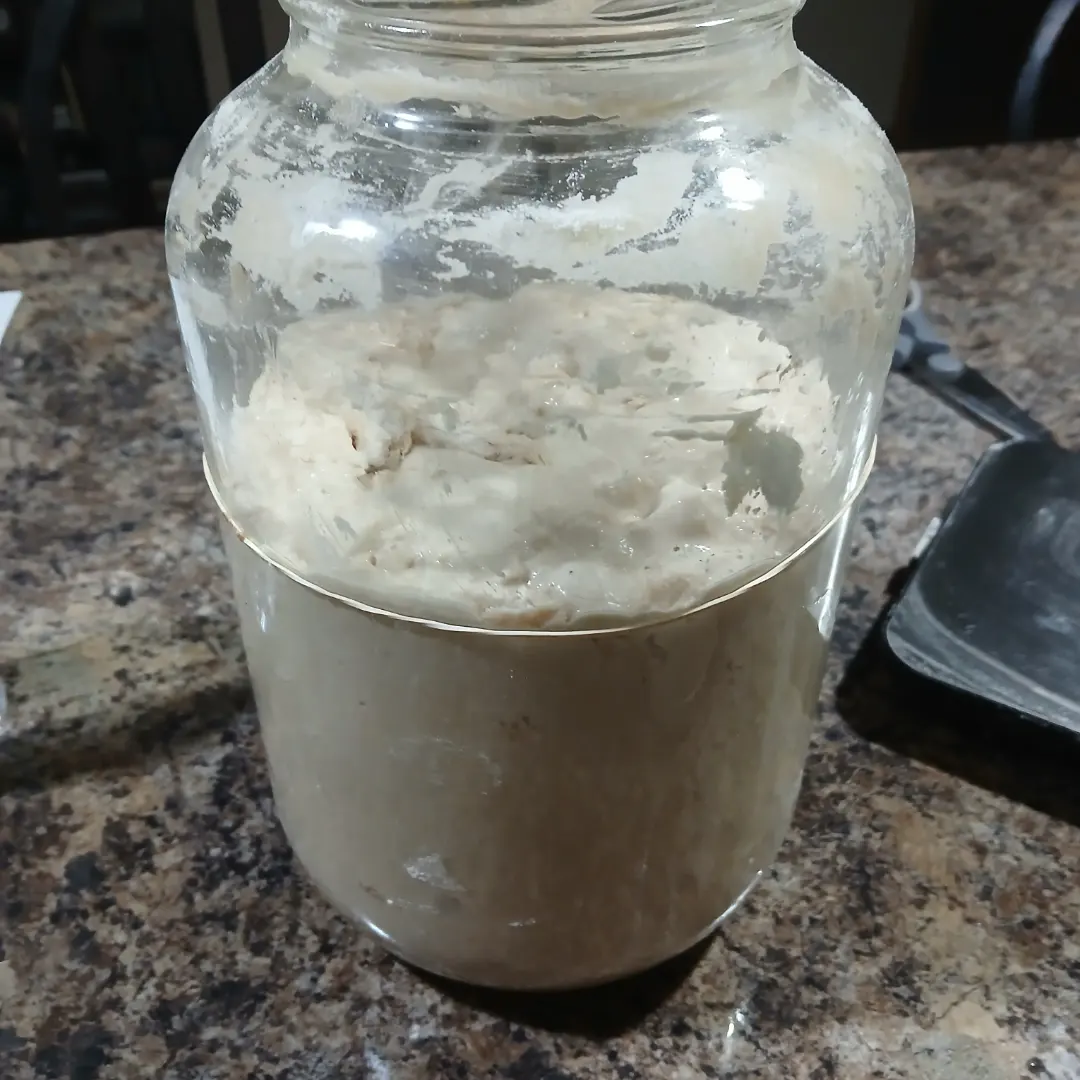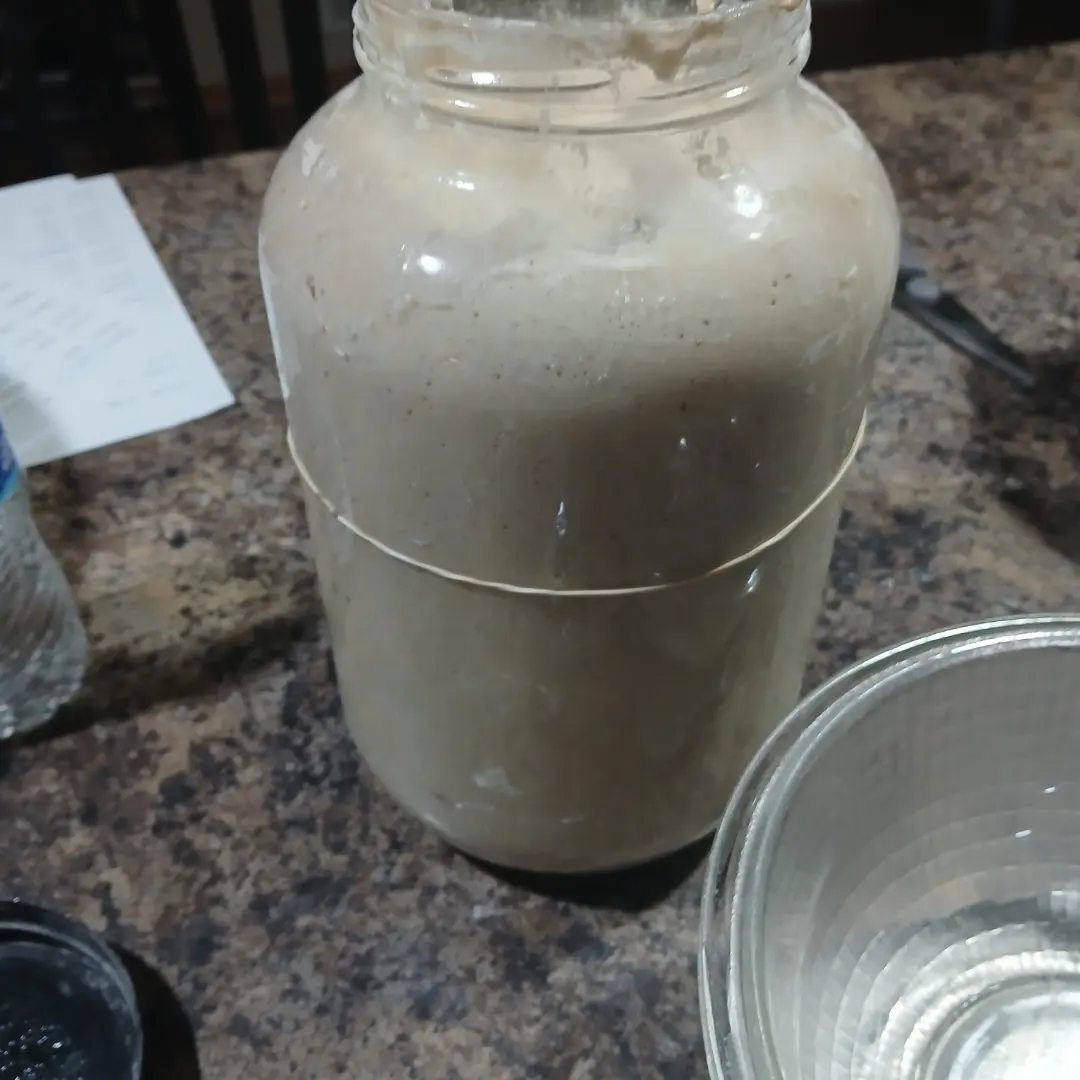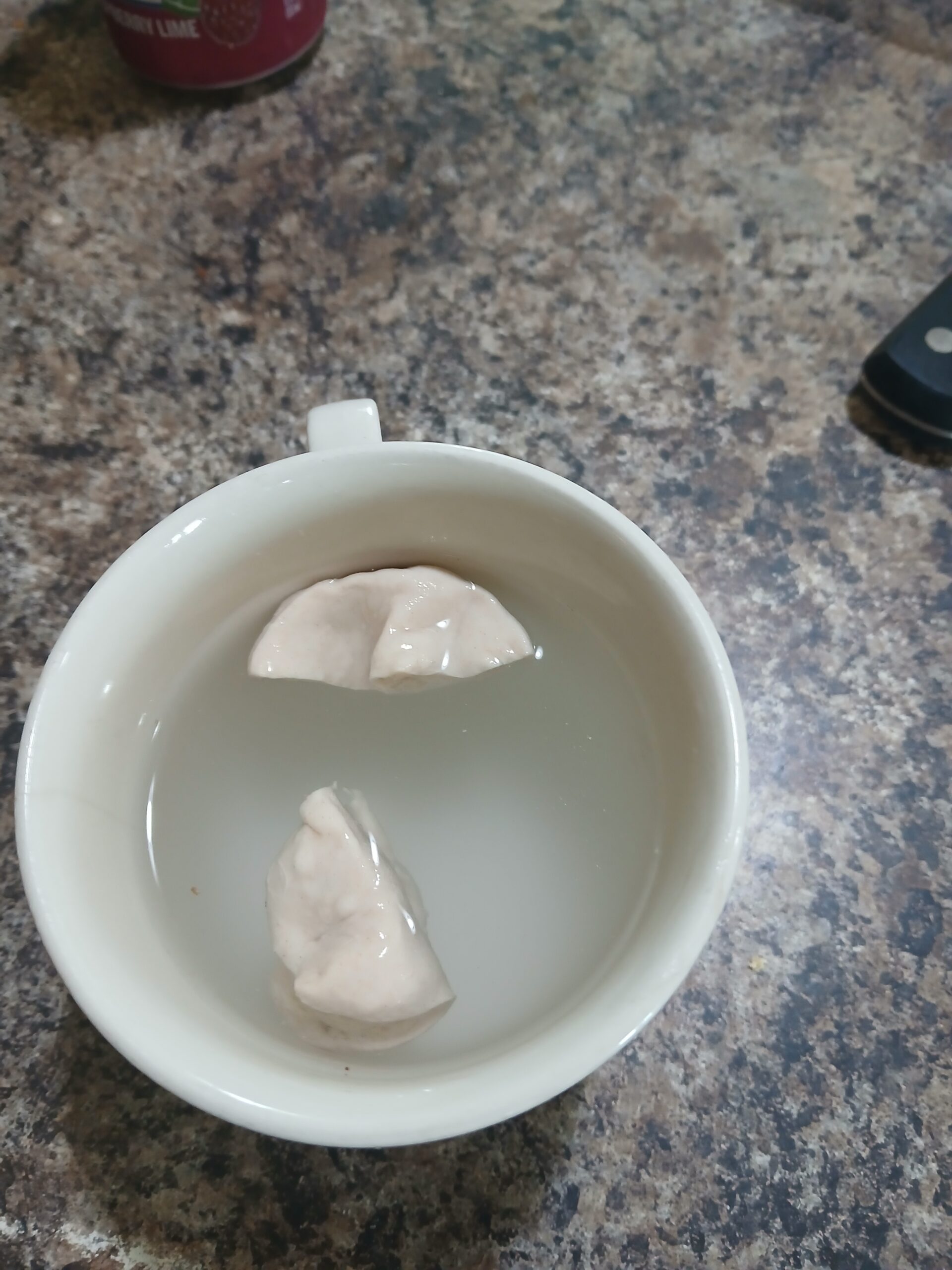The Float Test
If you have been making sourdough, you probably have heard or know about the float test. It’s an easy process to tell if your starter is ready to be used in your breads.
How to feed your starter?
When you have your starter, you will normally feed it with equal amounts of flour and water. If you have a kitchen scale on hand, this will make the process more accurate. However, if you do not have a scale, your fed starter should look kind of like a thick pancake batter. Mix the fed starter.
How do you know if your starter is ready?
One indicator of knowing when your starter is ready would be when it doubles in size (putting a rubber band around your jar helps to visualize how much it has risen). The time this takes depends on several factors. Some of these factors are the flour, which is being used, the temperature of the air, the temperature of the water, which was used, and how active your starter is. If I take my starter out of the refrigerator (and don’t worry about the hooch if it hasn’t been used in a while, just mix it up), I will feed it at about 10:00 p.m. and it is ready around 5:00 a.m. or 6:00 a.m. If my starter has been on my counter and recently used it can be active and ready within a couple of hours.

What if you need your starter to get ready for use and it is not doubling in size?
There are a few ways to speed up the activity of your starter. If you turn your oven light on and put your starter in the oven, it will activate more quickly. Also, you could set your starter in a bowl of warm water. A clever method I learned from someone was to put your starter in the car on a warm day. By the way, all of these methods can also be applied to speed up the proofing of your dough.

What if your starter has started to fall from its highest rise?
If your starter has started to fall, that means it has run out of energy (food) to keep thriving. You may have to refeed your starter. If you are unsure, this is when the float test comes in handy.
What is the float test?
A super handy way of recognizing if your starter is ready is using the float test. You will need to fill a container with water (I use a cup), take a spoon and put a small amount of the starter in the water filled container. If it floats on the top your starter is ready to use. If your starter kind of falls apart yet floats, it may be running out of energy and your loaves may not rise as nicely as they could.
Can you do a float test on dough?
Yes! You can do a float test on your dough. Gently cut (I use some scissors) a small piece of the dough off of your bread that is being proofed. Drop the piece into the container filled with water (again, I use a cup) and see if it floats. If it floats, it is ready to be shaped. If it doesn’t float, let it proof a bit longer.

There are other methods to tell if your bread is proofed. The float test is just one of those which seems to be quite accurate. If you are every wondering if your starter or dough is ready, maybe next time the float test can be tried.
Until next time, happy baking!
